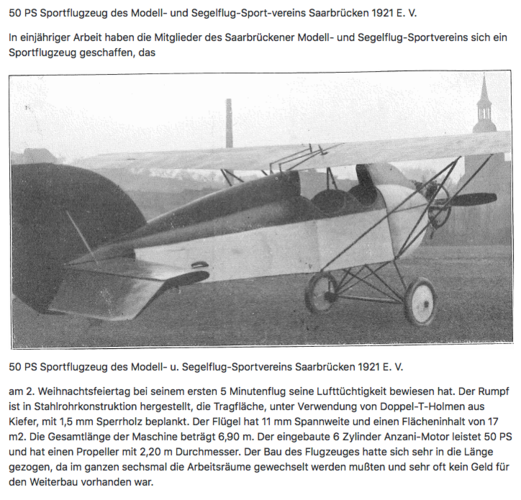You are using an out of date browser. It may not display this or other websites correctly.
You should upgrade or use an alternative browser.
You should upgrade or use an alternative browser.
German Independent Designers
- Thread starter Wurger
- Start date
richard B
ACCESS: Secret
- Joined
- 17 August 2006
- Messages
- 339
- Reaction score
- 487
And who knows that designer, Kaus ?
.https://www.technikmuseum.findbuch....76bf763dac7e0c7e1e1e3c6ece1e1e3eae4e4c739f13f
richard B
ACCESS: Secret
- Joined
- 17 August 2006
- Messages
- 339
- Reaction score
- 487
also that was unknown to me, Metschler & Pöppel ?.
https://www.technikmuseum.findbuch....76bf763dac7e0c7e1e1e3c6ece1e1efe1eee6c739f13f
https://www.technikmuseum.findbuch....76bf763dac7e0c7e1e1e3c6ece1e1efe1eeedc739f13f
- Joined
- 26 May 2006
- Messages
- 34,495
- Reaction score
- 15,277
- Joined
- 19 July 2016
- Messages
- 4,185
- Reaction score
- 3,332
That site is mostly empty or has dead links.
- Joined
- 26 May 2006
- Messages
- 34,495
- Reaction score
- 15,277
That site is mostly empty or has dead links.
Yes my dear Foo Fighter,
so we ask about those missing designers,and what about Michelstadt Maikäfer ?.
richard B
ACCESS: Secret
- Joined
- 17 August 2006
- Messages
- 339
- Reaction score
- 487
Flugzeugbau Michelstadt built for DFS the motor glider Maikäfer designed by Lippisch in 1935 .
https://www.j2mcl-planeurs.net/dbj2mcl/planeurs-machines/planeur-fiche_0int.php?code=2449
https://www.j2mcl-planeurs.net/dbj2mcl/planeurs-machines/planeur-fiche_0int.php?code=2449
richard B
ACCESS: Secret
- Joined
- 17 August 2006
- Messages
- 339
- Reaction score
- 487
MMW (Mitteldeutsche Metallwerke) built in 1944 the Kalkert Ka 430 .
https://www.secretprojects.co.uk/threads/kalkert-ka-430-cargo-glider.5359/
https://www.secretprojects.co.uk/threads/kalkert-ka-430-cargo-glider.5359/
Last edited:
- Joined
- 11 March 2012
- Messages
- 3,229
- Reaction score
- 3,128
MMW (Mitteldeutsche Metallwerke) built in 1944 the Kalkert Ka 430 .
https://www.secretprojects.co.uk/threads/kalkert-ka-430-cargo-glider.5359/
Dipl. ing. Albert Kalkert was born in Thuringia, Weimar Republic was a prolific airplane designer.
During the 1920s, he designed and flew a low-wing, cantilever monoplane powered by a mere 100 horsepower, but capable of carrying a pilot plus 4 passengers. The manufacturer was "R ... something."
Kalkert started designing for Gotha during the early 1930s. His first Gotha design was the popular (1,100 built) Gotha 145 biplane, light trainer. Then the prototype-only Go.146 light touring airplane, then the Go. 147 experimental, parasol flying wing (similar to the Westland Pteradactyl), Go.148 light twin, Go.150 two-seater sport turned military trainer, followed by the Go. 242 assault glider, Go.244 motorized transport variant and finally the Ka. 430 assault glider.
Finally, the Go.345 pulse-jet powered cargo transport.
Aubi
ACCESS: Secret
As for MMW:
Founded in late 1930s, as repair shop for Heinkel aicraft. 1940 Kalkert became employee, and after the renaming/reorganisation the company starts manufacturing Focke-Wulfs Fw 190 A-8, A-9, D-9 and Ta 154 A-4. Kalkert Ka 430 Seems to be the only "new" product of theirs. In 1945 the Soviets dismantled the factory as a victory prize and moved everything back to the USSR.
Founded in late 1930s, as repair shop for Heinkel aicraft. 1940 Kalkert became employee, and after the renaming/reorganisation the company starts manufacturing Focke-Wulfs Fw 190 A-8, A-9, D-9 and Ta 154 A-4. Kalkert Ka 430 Seems to be the only "new" product of theirs. In 1945 the Soviets dismantled the factory as a victory prize and moved everything back to the USSR.
topspeed3
ACCESS: Secret
- Joined
- 31 January 2011
- Messages
- 316
- Reaction score
- 100
It is incredible how far ahead germans were in 1923 in aerodynamics and efficiency !

 en.wikipedia.org
en.wikipedia.org


Roter Vogel - Wikipedia
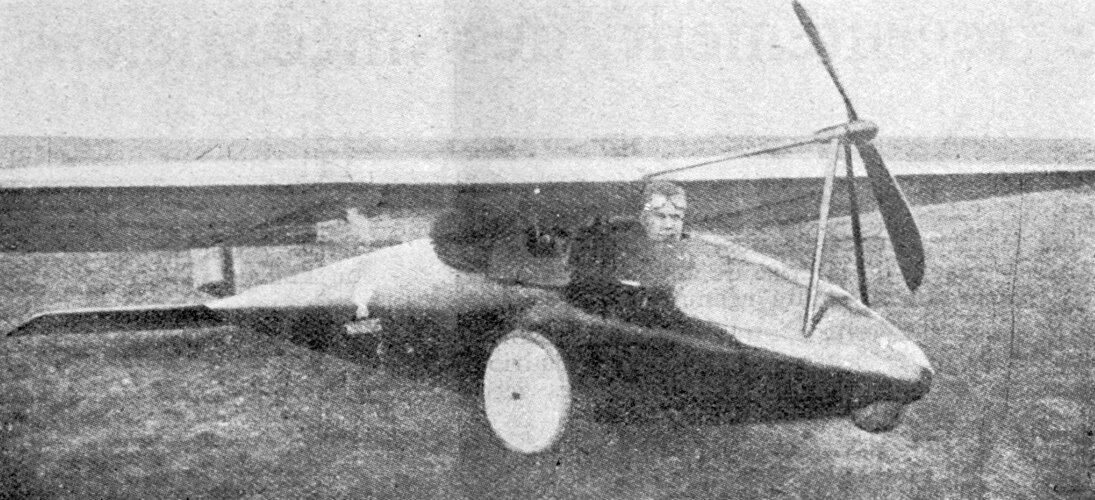
richard B
ACCESS: Secret
- Joined
- 17 August 2006
- Messages
- 339
- Reaction score
- 487
(Sorry , Google traductionWhat happened to Albert Kalkert after WW2?
Attachments
richard B
ACCESS: Secret
- Joined
- 17 August 2006
- Messages
- 339
- Reaction score
- 487
richard B
ACCESS: Secret
- Joined
- 17 August 2006
- Messages
- 339
- Reaction score
- 487
E.V is for "Eingetragener Verein" (registered association)
For Neuscheler's Doppeldecker , have a look here , and enjoy :
For Neuscheler's Doppeldecker , have a look here , and enjoy :
https://hannsklemm.wordpress.com/wichtige-personen/neuscheler-wilhelm/
- Joined
- 26 May 2006
- Messages
- 34,495
- Reaction score
- 15,277
Many thanks my dear Richard,
and as mentioned here,Mr. Otto Onigkeit designed aircraft after WWI ?.
and as mentioned here,Mr. Otto Onigkeit designed aircraft after WWI ?.
richard B
ACCESS: Secret
- Joined
- 17 August 2006
- Messages
- 339
- Reaction score
- 487
Otto Onigkeit (Magdeburg) built before the first world War four monoplanes .Mr. Otto Onigkeit designed aircraft after WWI ?.
After the War , in 1921-1923 , he built a man-powered plane with crashed at it first taking off in 1923 . Otto Onigkeit was heavily injured .
In 1924 he built a little biplane which he flew until 1935 .
In 1925-1926 he built a monoplane .
At last , in 1938 , he built a new man-powered which flew several times .
Here , the 1924 biplane and the 1938 man-powered monoplane . I don't know pictures of the first and third planes : I would be glad to see them ...
https://www.technikmuseum.findbuch....76bf763dac7e0c7e1e1e3c6ece1e1efe1edeac739f13f
https://www.technikmuseum.findbuch....76bf763dac7e0c7e1e1e3c6ece1e1efe1e6e1c739f13f
- Joined
- 26 May 2006
- Messages
- 34,495
- Reaction score
- 15,277
Attachments
richard B
ACCESS: Secret
- Joined
- 17 August 2006
- Messages
- 339
- Reaction score
- 487
Your picture shows a sailplane which could be a Berlin Segelflugverein Luftikus .here is a motorglider,designed by L. Otto.
The Ott Dynamikus was shown at the Vergleichsfliegen in Rangsdorf (Nr.5) (13-17 august 1937) , with ten other light planes .
It was , like the Saurna-Jeltsch Milan and the Sombold Kormoran , similar to the well known Schneider/Grunau Motor-Baby .
Attachments
Last edited:
- Joined
- 26 May 2006
- Messages
- 34,495
- Reaction score
- 15,277
Thank you my dear Richard,
has anyone a drawing or picture to F. Papenmeyer P 1 Monoplane ?,
Ingenieur F. Papenmeyer worked among other at the Flugzeugbau Kiel as designer. In the beginning of the thirties he designed a lowwing monoplane with a radial engine and a rectractable undercarriage for Graf Reventlow. The plan was to have it ready to the Europa-Rundflug 1932. It was probably never finished.
has anyone a drawing or picture to F. Papenmeyer P 1 Monoplane ?,
Ingenieur F. Papenmeyer worked among other at the Flugzeugbau Kiel as designer. In the beginning of the thirties he designed a lowwing monoplane with a radial engine and a rectractable undercarriage for Graf Reventlow. The plan was to have it ready to the Europa-Rundflug 1932. It was probably never finished.
Maveric
Fight for yor Right!
- Joined
- 14 January 2007
- Messages
- 2,216
- Reaction score
- 817
richard B
ACCESS: Secret
- Joined
- 17 August 2006
- Messages
- 339
- Reaction score
- 487
Papenmeyer designed the P.1 for Hubertus Graf von Reventlow-Criminil.
Graf von Reventlow , after having got his pilot licence in April 1931 , bought on the 7th May 1931 the Sausewind IV D-1414 . He crashed on the 14th of the same month . The pilot was not injured , but the D-1414 was totally destroyed ...
Page 19 : https://adl-luftfahrthistorik.de/dok/baeumer-aero-b-ii-und-b-iv-sausewind-sportflugzeug.pdf
Source Bruno Lange : "He ordered the Papenmeyer P.1 for the 1932 Europa-Rundflug . Probably never finished"
Graf von Reventlow , after having got his pilot licence in April 1931 , bought on the 7th May 1931 the Sausewind IV D-1414 . He crashed on the 14th of the same month . The pilot was not injured , but the D-1414 was totally destroyed ...
Page 19 : https://adl-luftfahrthistorik.de/dok/baeumer-aero-b-ii-und-b-iv-sausewind-sportflugzeug.pdf
Source Bruno Lange : "He ordered the Papenmeyer P.1 for the 1932 Europa-Rundflug . Probably never finished"
- Joined
- 26 May 2006
- Messages
- 34,495
- Reaction score
- 15,277
Thank you my dear Richard.
For Mr. Willi Pelzner,he designed a Sportplane,Skorpion and Hang glider,
only the last we have a picture ?.
For Mr. Willi Pelzner,he designed a Sportplane,Skorpion and Hang glider,
only the last we have a picture ?.
Attachments
richard B
ACCESS: Secret
- Joined
- 17 August 2006
- Messages
- 339
- Reaction score
- 487
Pelzner built the Skorpion in Germany , in the mid-twenties .
https://www.technikmuseum.findbuch....76bf763dac7e0c7e1e1e3c6ece1e1efe1e6ecc739f13f
He later worked in Sweden , where he built gliders and four airplanes :
from Flugsport 1927 Nr 18 : Pelzner P 70 .


From Flugsport 1931 Nr 13 : P.158 H II

From Flyghistorisk Revy :
Aeolus TP 171 (1931)

The Göken (1931)

https://www.technikmuseum.findbuch....76bf763dac7e0c7e1e1e3c6ece1e1efe1e6ecc739f13f
He later worked in Sweden , where he built gliders and four airplanes :
from Flugsport 1927 Nr 18 : Pelzner P 70 .
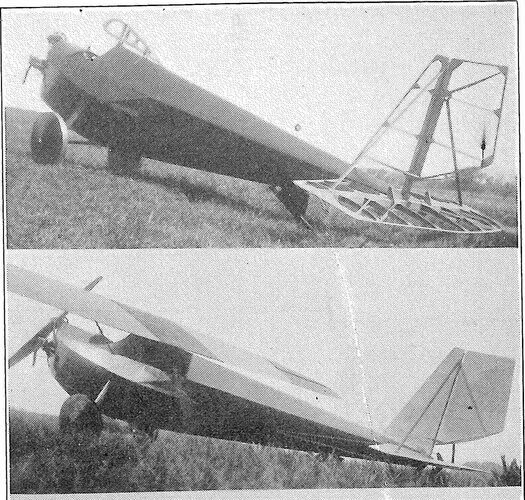
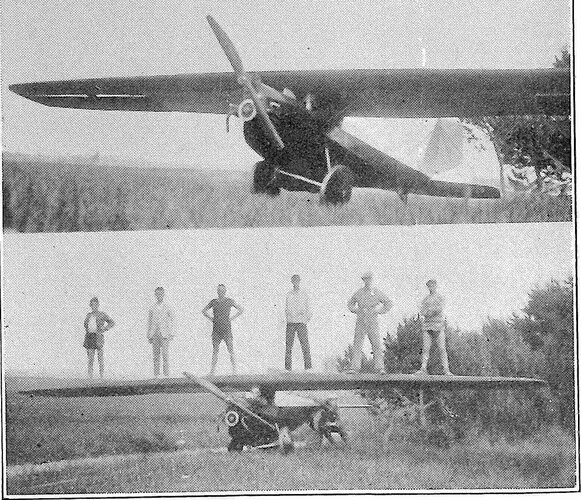
From Flugsport 1931 Nr 13 : P.158 H II

From Flyghistorisk Revy :
Aeolus TP 171 (1931)
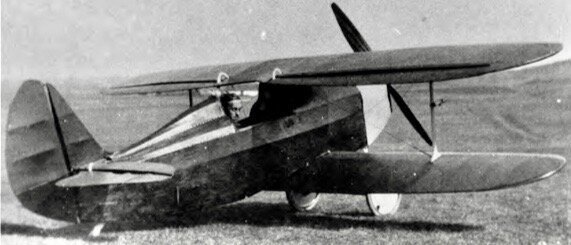
The Göken (1931)
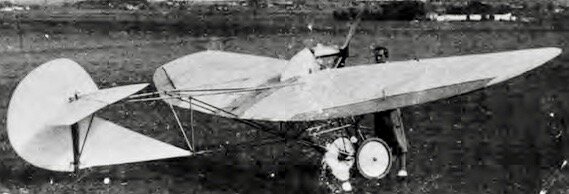
Last edited:
- Joined
- 25 July 2007
- Messages
- 4,337
- Reaction score
- 4,154
From generic sources ...
The Göken (Cuckoo) was designed in 1930-31 by the German flight instructor, Willy Pelzner (01 June 1900-23 July 1977). The Göken was assembled at Pelzner's flying school at Hammars Backar (east of Ystad) - by then, his original partner, Greve Douglas Hamilton had departed. The open framework fuselage was constructed from welded steel tubing ... alas, no other details.
In 1931, Pelzner formed the Flygtekniska Försöksinstitutet Aeolus (Aeronautical Experimental Institute Aeolus) with Lennart Hemminger. Together, they designed the TP 171 light biplane. Structure was veneer-covered wooden wings and a fabric-covered, welded steel-tube fuselage. Power was by a 24 hp Hirth 2-stroke engine.
The Göken (Cuckoo) was designed in 1930-31 by the German flight instructor, Willy Pelzner (01 June 1900-23 July 1977). The Göken was assembled at Pelzner's flying school at Hammars Backar (east of Ystad) - by then, his original partner, Greve Douglas Hamilton had departed. The open framework fuselage was constructed from welded steel tubing ... alas, no other details.
In 1931, Pelzner formed the Flygtekniska Försöksinstitutet Aeolus (Aeronautical Experimental Institute Aeolus) with Lennart Hemminger. Together, they designed the TP 171 light biplane. Structure was veneer-covered wooden wings and a fabric-covered, welded steel-tube fuselage. Power was by a 24 hp Hirth 2-stroke engine.
richard B
ACCESS: Secret
- Joined
- 17 August 2006
- Messages
- 339
- Reaction score
- 487
Skorpion : 35 hp ABC ; Span 7,6 m ; Vmax 130 km/h .
P 70 (Marling E-142 in Sweden) : Span 10,4 m ;12-24 hp engines ; Wing area 10,5 m2 ; Vmax 128 km/h ;
Douglas Hamilton-Pelzner P 158 H II : Span 9,8 m ; Length 5,8 m ; Wing area 14 m2 ; 16 hp engine ; Vmax 104 km/h ;
P 70 (Marling E-142 in Sweden) : Span 10,4 m ;12-24 hp engines ; Wing area 10,5 m2 ; Vmax 128 km/h ;
Douglas Hamilton-Pelzner P 158 H II : Span 9,8 m ; Length 5,8 m ; Wing area 14 m2 ; 16 hp engine ; Vmax 104 km/h ;
- Joined
- 26 May 2006
- Messages
- 34,495
- Reaction score
- 15,277
richard B
ACCESS: Secret
- Joined
- 17 August 2006
- Messages
- 339
- Reaction score
- 487
From the Bruno Lange books : Sächsische Flugzeugindustrie GmbH (Dresden) (SFI) Gammelin Ga1 "Kombinations-Flugzeug"
Two seater , the 9,70m wing can be enlarged to 12,95m , and it can get side windows to close the cockpit becoming then sport/school/travel plane .
Vmax 175 km/h . Hirth HM 60 R-1 engine . It was tried at Rechlin in 1934 .
Picture : from Herr Karlheinz Kens :

Two seater , the 9,70m wing can be enlarged to 12,95m , and it can get side windows to close the cockpit becoming then sport/school/travel plane .
Vmax 175 km/h . Hirth HM 60 R-1 engine . It was tried at Rechlin in 1934 .
Picture : from Herr Karlheinz Kens :
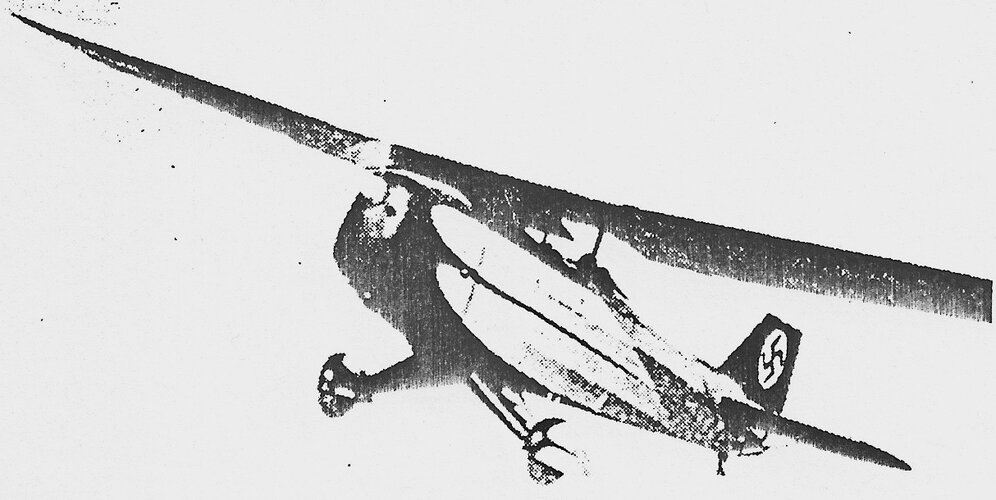
Attachments
Last edited:
- Joined
- 26 May 2006
- Messages
- 34,495
- Reaction score
- 15,277
Thank you my dear Richard,
and here is a Sportplane designed by Flugtechnischen Vereins Spandau.
and here is a Sportplane designed by Flugtechnischen Vereins Spandau.
Attachments
woodville
I really should change my personal text
- Joined
- 15 May 2013
- Messages
- 48
- Reaction score
- 125
Here are two photos & a data table from "Svenska Flygplan" by Lennart Andersson.From generic sources ...
The Göken (Cuckoo) was designed in 1930-31 by the German flight instructor, Willy Pelzner (01 June 1900-23 July 1977). The Göken was assembled at Pelzner's flying school at Hammars Backar (east of Ystad) - by then, his original partner, Greve Douglas Hamilton had departed. The open framework fuselage was constructed from welded steel tubing ... alas, no other details.
In 1931, Pelzner formed the Flygtekniska Försöksinstitutet Aeolus (Aeronautical Experimental Institute Aeolus) with Lennart Hemminger. Together, they designed the TP 171 light biplane. Structure was veneer-covered wooden wings and a fabric-covered, welded steel-tube fuselage. Power was by a 24 hp Hirth 2-stroke engine.
The first is described as an ultralight with 10hp ABC from1931 - so this is The Göken (Cuckoo).
The second is described as a biplane from 1931 with 24hp Hirth - presumably the TP171.
There is also a table of Swedish light plane specifications - the Pelzner Biplan with 24hp Hirth would then be the TP171.
The Google translation for the accompanying text reads:
"Willy Pelzner's business as a designer and innovator for the construction of aircraft is not fully investigated. Several projects were built without the usual control but with the good memory of the authorities. One example is a biplane with a water-cooled Hirth engine of 24hp. The plane was built in 1930-31 and would have been on ILIS-31 in Stockholm. The plane was not registered, but surveyor Kjellson admitted flying in the immediate surroundings. On the first test flight in the spring-31, a fence stood in the way. Around the same time, a 10 hp motorized hang glider was underway , the end result was a small aircraft reminiscent of the early ultralight aircraft of the 1980s."
Attachments
- Joined
- 26 May 2006
- Messages
- 34,495
- Reaction score
- 15,277
Bernhard Scheller from Celle, S.IV/31 "Jörg"
There was also S III,a single seat low-wing sporting monoplane,and S V,it
was a Project for a touring aircraft with a pusher engine,what about S I &
II ?.
Attachments
Similar threads
-
-
LFG (Luft-Fahrzeug-Gesellschaft) Projects
- Started by hesham
- Replies: 21
-
Projects of the German Secret Flight Test Center at Lipetsk, USSR 1924-1933
- Started by Dynoman
- Replies: 37
-
-




